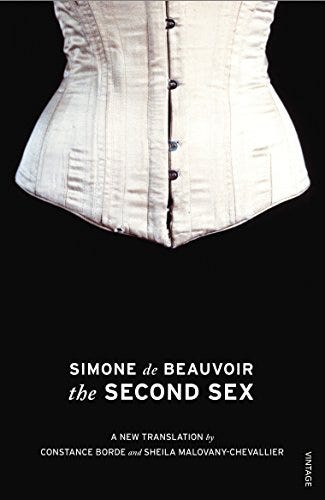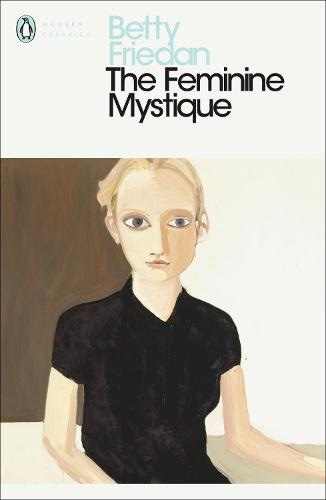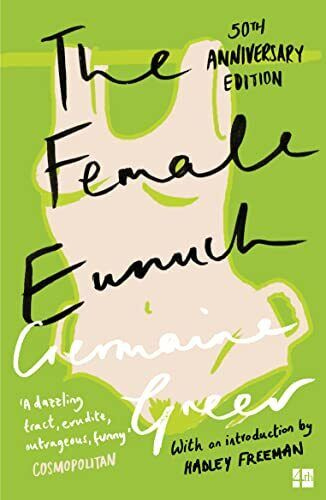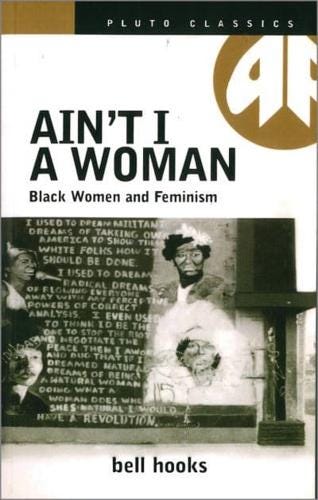
Over the past four weeks, I have been running a series of linked essays looking at different areas of the feminist movement. Thank you to everyone who has read and left positive comments on these posts, as well as many of you who have shared the newsletters on Notes. It really means a lot to know that readers and subscribers enjoy the themes and topics of this publication.
Other than a full biography of Gloria Steinem, which I am currently working on, this is my final essay of this current series. However, the very title and existence of this newsletter is based around the idea of women’s narratives and the ways in which women’s stories of the past affect the present. Therefore, many of these writers, activists, and ideas will continue to permeate my writing and research.
For this week, we are going to look at four of the more well-known and instrumental texts and writers of the second-wave feminist movement.
I have written before on Simone de Beauvoir’s The Second Sex, amongst other essays about the feminist writer and philosopher.
First published in Beauvoir’s native post-war France in 1949, just five years after French women secured voting rights, The Second Sex is often seen as the first text to point to the issues facing women in society, though as we saw from my post on Protofeminism a few weeks ago, women writers and thinkers had been anticipating feminism and feminist issues long before Beauvoir’s book appeared.
Beauvoir’s book was quite revolutionary in its insistence that though women are equal to men, there are in reality differences based on sex. She suggested that women were not inferior to men, just different. She argued that men fundamentally oppressed women, seeing them as ‘Other’ and that women were seen as ‘objects’. Although she acknowledged that men and women were different from one another, she argued that this didn’t mean women should become “The Other”. Controversially, she suggested that religion and myth had perpetuated this concept, and whilst we originally thrived in a matriarchal society, the concepts of male dominance and property meant that these ideas were permanently changed.
Beauvoir challenged the long-held assumptions that gender differences are based on biological differences, meaning that women were seen as inherently inferior to men. This, Beauvoir thought, was an historically constructed position which continued to proliferate society. Women’s role within the patriarchal system, Beauvoir suggested, makes women more inclined to make themselves smaller, in order to fit the patriarchal system.
“One is not born, but rather becomes, a woman.” Simone de Beauvoir
The 1960s, as we have discussed in earlier essays, saw second-wave feminist activism, in which women demanded more autonomy in work and reproductive rights, as well as financial rights equal to men. One of the most influential and well-known books of second-wave feminism was Betty Friedan’s The Feminine Mystique.
Friedan’s book explored “the problem that had no name” and discussed the pervasive dissatisfaction amongst American women in the post-war period. Her choice of the term ‘feminine mystique’ referenced the societal assumption that women’s satisfaction could be fulfilled through housework, marriage, and mothering alone.
She further challenged the notions that truly ‘feminine’ women eschewed higher education, their own career, or political involvement, as unnecessary. Rather, society dictated that women should be completely fulfilled within the domestic sphere. Her term “the problem that has no name” came from Friedan’s suggestion that women had no words to articulate their dissatisfaction with their lives, and therefore their perceived inability to live up to the feminine mystique was the problem that had no name.
Friedan’s theories were based on twentieth-century psychologist Abraham Maslow’s hierarchy of needs, and she argued that women were denied the basic human need to grow. She suggested that this inability to develop as a person would mean that women continued to be unhappy, unfulfilled, and neurotic. She argued that personal achievement led to a cultivation of identity, often through career and professional development, and that this was true for both men and women.
Part of her theories stemmed from her study of post-war women who had stepped into male roles during the war, only to find themselves being summarily returned to the domestic sphere once men returned. Middle-class white women in particular were also seen to represent the ideals of post-war American capitalist consumerism, which can often be seen in advertisements for the latest home gadgets of this era.
Friedan’s ideas for women’s fulfilment suggested that, rather than finding fulfilment within household chores, women should be getting these done as quickly as possible and therefore being able to also enjoy a career outside of the home.
As we saw last week in our discussion on Black feminism, however, Freidan’s book tended towards the white, middle-class housewife. Friedan’s work was criticised for its often racist and classist attitudes towards working women, where African American women and the working-classes often worked outside the home as a necessity.
Another issue with Friedan was her undoubtedly dubious feelings towards the LGBTQ+ community. As I wrote about in my essay on Rita Mae Brown’s Rubyfruit Jungle last year, Brown was removed from her editorial role at a feminist newsletter created by Friedan in 1970 due to Friedan’s apparent belief that lesbians within the feminist movement were a ‘distraction’ from the central issues of women’s politics. She referenced lesbian women the ‘lavender menace’ of the movement, causing Brown to resign from the movement, attacking the leadership for their oppression of women due to their sexual orientation.
Further, she attended the Second Congress to Unite Women, in New York City, forming a splinter group after Friedan’s newsletter refused to feature any openly gay women or discuss any topics pertaining to them. Brown’s splinter group, the Raidcalesbians, started an intervention, infiltrating the audience of straight women, wearing purple t-shirts and declaring themselves ‘the lavender menace in the flesh’ amongst other slogans.
I think it’s fair to say that Friedan held some strange and clearly unacceptable views on who should have a voice within the feminist movement. What I would suggest however is that her text became a sensation amongst middle-class America, meaning that as the women she was writing for passed it along, it helped to spur second-wave feminism, opening up the conversation of the roles women wanted to occupy in the future.
In The Female Eunuch, published in 1970, Australian writer, academic, and radical feminist Germaine Greer argued that it was women’s responsibility to establish new definitions of femininity, their sexuality, and their lives. She suggested that sex was a biological given whilst gender roles were cultural constructs, and argued for liberation rather than equality. She saw self-determination and self-definition as priorities for women, telling them to assert their uniquely female differences.
Greer’s text made suggestions that the patriarchal society hated women, forcing women to internalise this hatred and turn it against themselves and their bodies. This, she posited, turned them into ‘female eunuchs’, unable to enjoy the pleasures of their sexuality.
Like Friedan’s work, her book primarily focused on white, cisgender, heterosexual women of the middle-classes. She believed that existing sociopolitical structures required abolishing because they were built on patriarchal values which disadvantaged women. This involved the questioning of perceived norms such as the institution of marriage and mothering. Greer held the opinion that the suburban nuclear family repressed women’s sexuality.
Her work supported many of the second-wave feminist movements’ causes, such as the discrimination against women in areas of work and financial concerns, marriage and divorce. But Greer also tackled many taboo topics not seen in other works, such as menstruation, sex, masturbation, and sexual violence. Her use of often explicit language and description was an attempt to normalise women’s discussions of their bodies and sexuality as a way towards their sexual liberation.
As discussed in my essay on the waves of feminism, however, Greer’s often witty and open dialogue on women’s sexuality has in recent years caused offence, particularly due to her comments on the #metoo movement and the acceptance of trans-women.
Again, looking at her original ideas through a twenty-first century lens, we can see merit within some of her attitudes to more open discussion of women’s bodies and experiences within a new generation of young women who are keen to own their own experiences. This has to be a positive move forward from our mother’s generation, for whom any discussion on issues such as menstruation, menopause issues, or sexual pleasure would have remained something to struggle with alone.
In 1981, bell hooks published Ain’t I a Woman, taking its title from Sojourner Truth’s infamous speech. In it, she examined the effects of racism and sexism for Black women and looked specifically at the civil rights movement and feminism from the time of suffrage to the 1970s. hooks argued that Black women had the lowest status and conditions within American society due to the sexism and racism endured through slavery.
She also argued that the stereotypes that had been formed during slavery still affected the ways in which Black women were treated and argued that this allowed for white society to deem white women as ‘pure’ and Black women as ‘seductive whores’. This, she argued, helped them to devalue the femininity of Black women.
She also tackled the racism and classicism within the feminist movement as being a largely white, middle-class organisation, which did not adequately represent the needs of women of colour or the poor. This, she suggested, reinforced sexism, racism, and classism, which led to the low numbers of women taking part in the feminist movement of the 1970s.
Finally, I wanted to end this piece by mentioning Gloria Steinem, who continues to work towards equality within the movement, and who although perhaps does not have a seminal text such as the ones mentioned here, has written extensively on women’s issues.
Because she has written a large body of work on many of the issues discussed within this series, and because I just basically love everything she does (!) I have decided to write a full biography on her life and writing in next weeks’ newsletter.
If that sounds like something you would love to read, and you aren’t already a subscriber, why not tap the button and join us here on A Narrative of their Own?
Have you read any of these books? Do you have any other feminist texts that you would like to share? Let’s chat in the comments!
This newsletter is a labour of love for researching and spreading the word about the fascinating legacy of women’s writing. If you have the means and the wish to support me in this endeavour, you can upgrade to a paid subscription from as little as £2 per month!








Fantastic discussion! There are some books in here that I really need to read. It’s interesting to see how some of these feminist pioneers excluded certain groups - and how feminist narratives are moving towards a more inclusive feminism :)
Thank you for this great overview of feminist literature, Kate! I never took a women’s studies class at university (didn’t quite fit in with my ag science degree!) but I feel like this series has been just as informative. Really looking forward to the biography of Gloria Steinem!